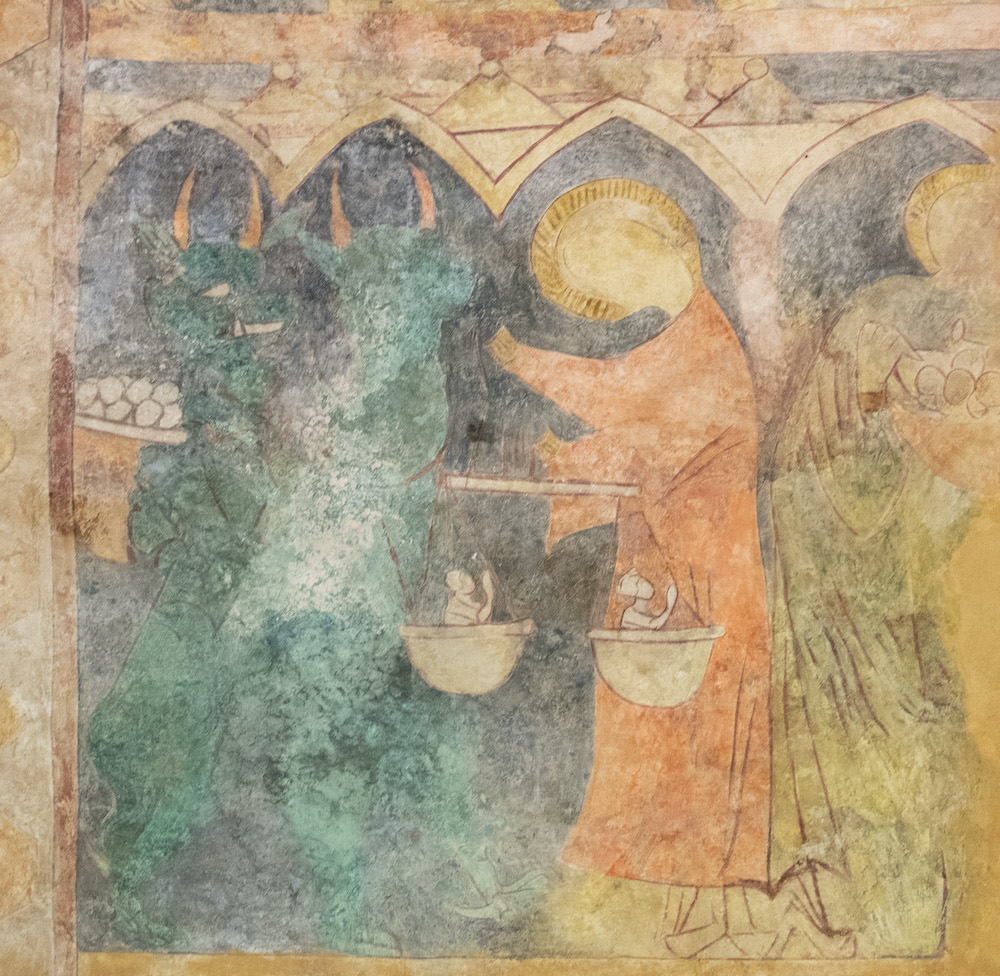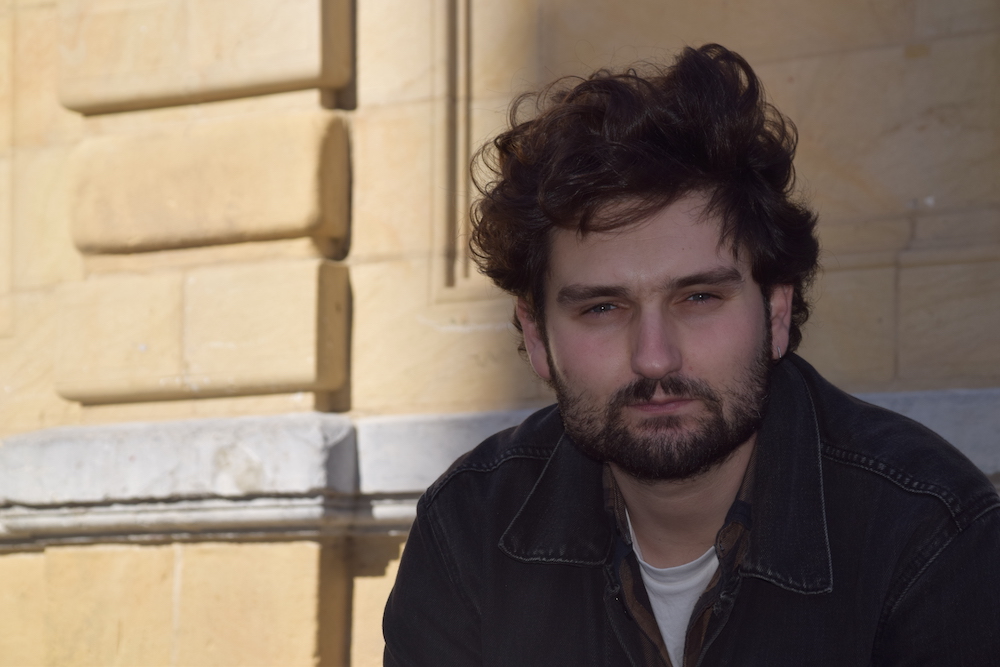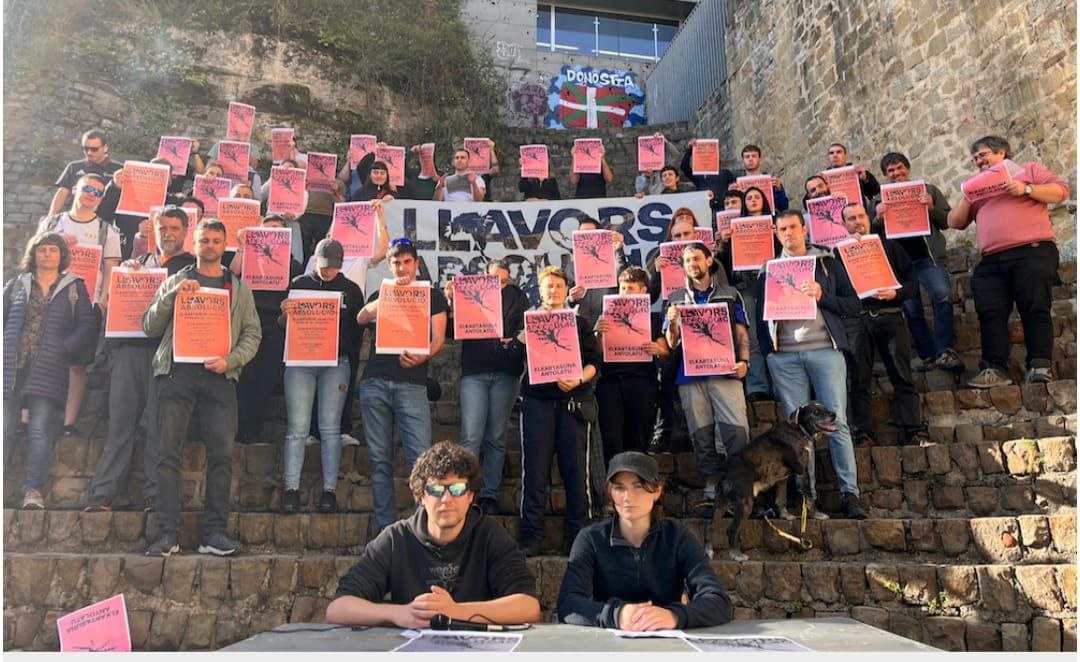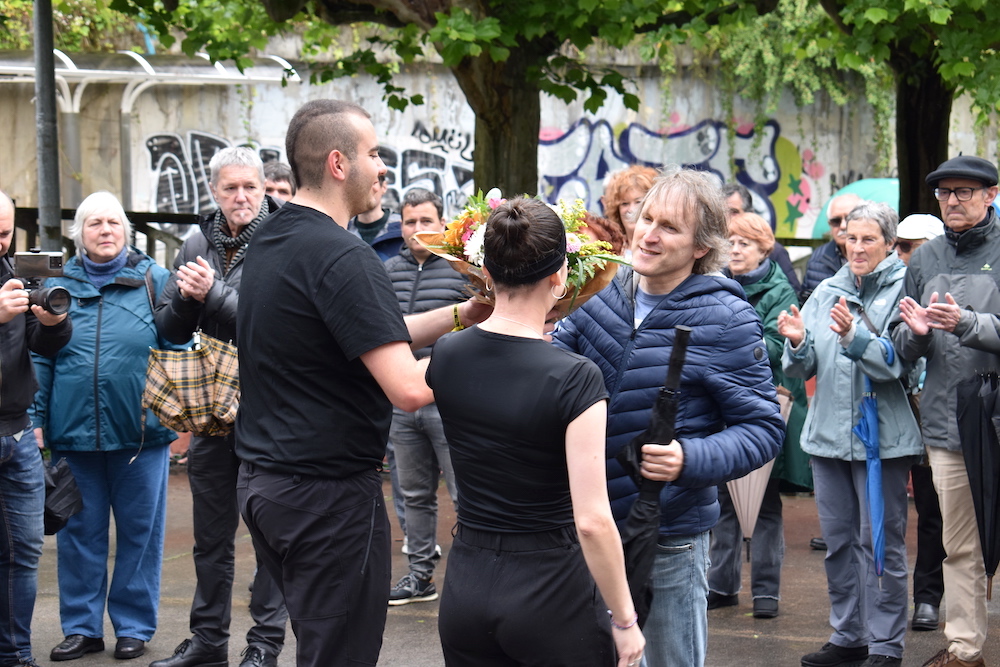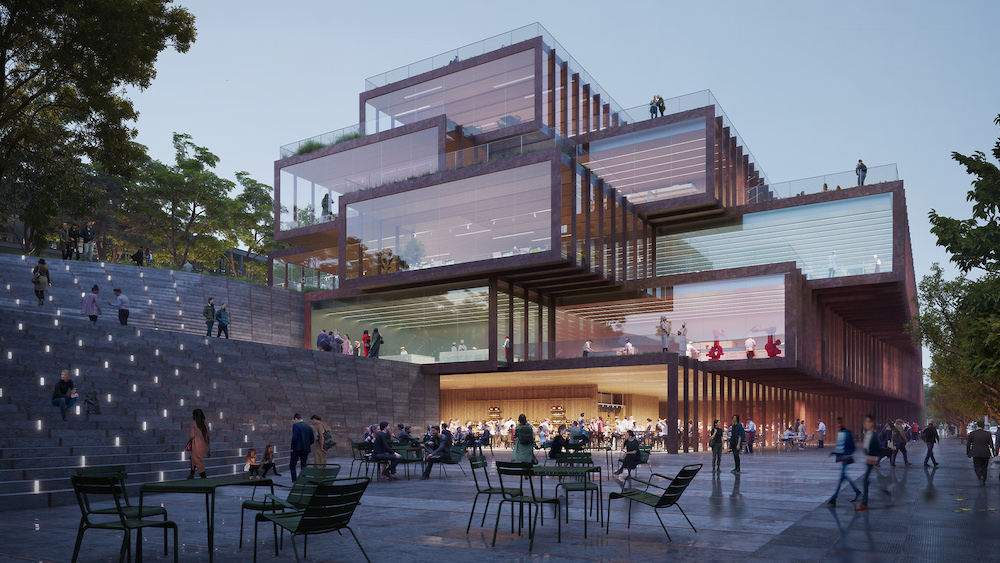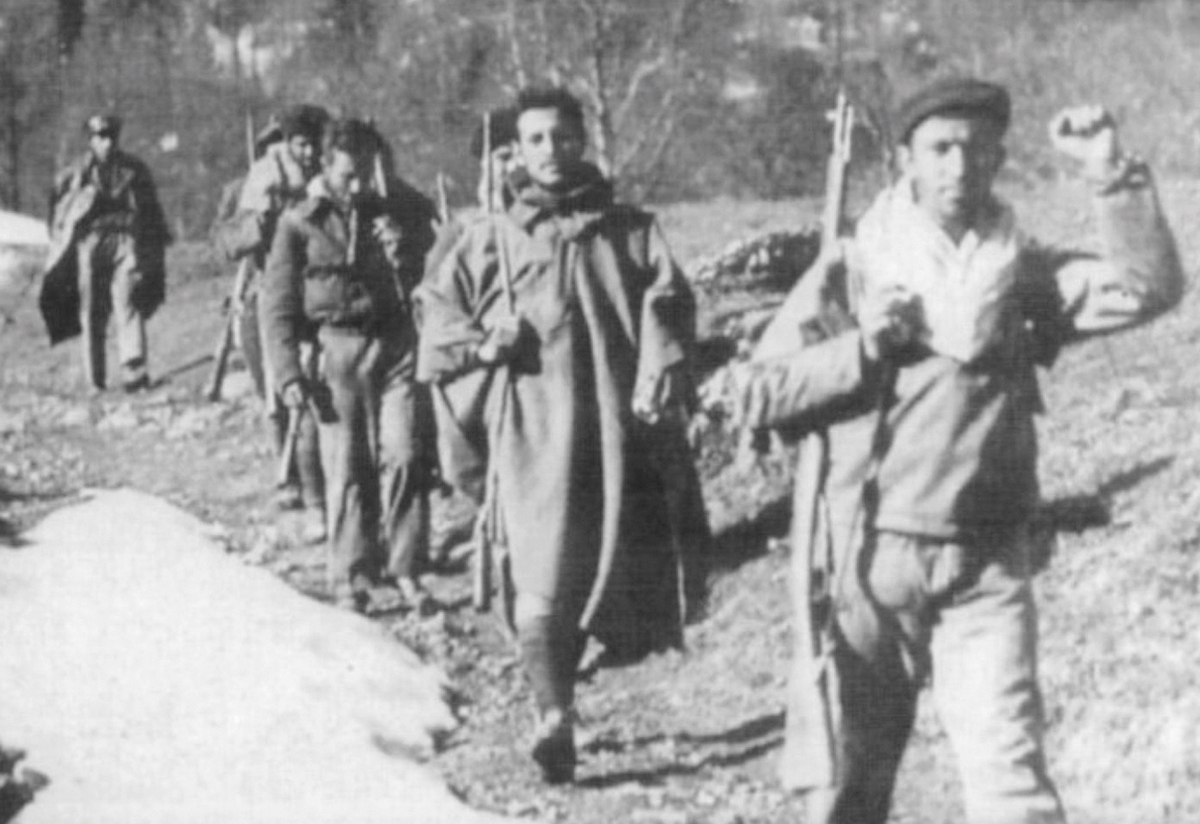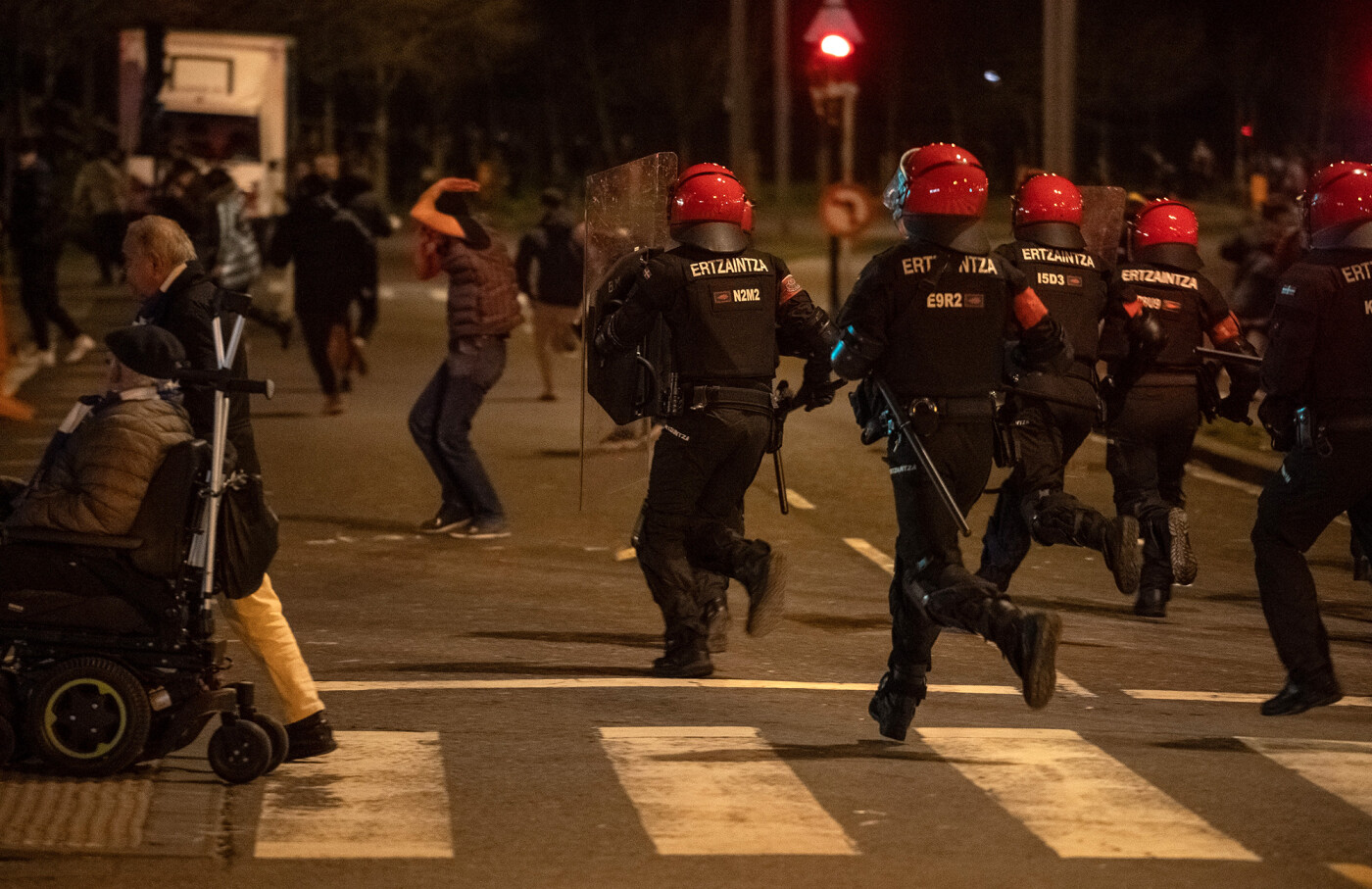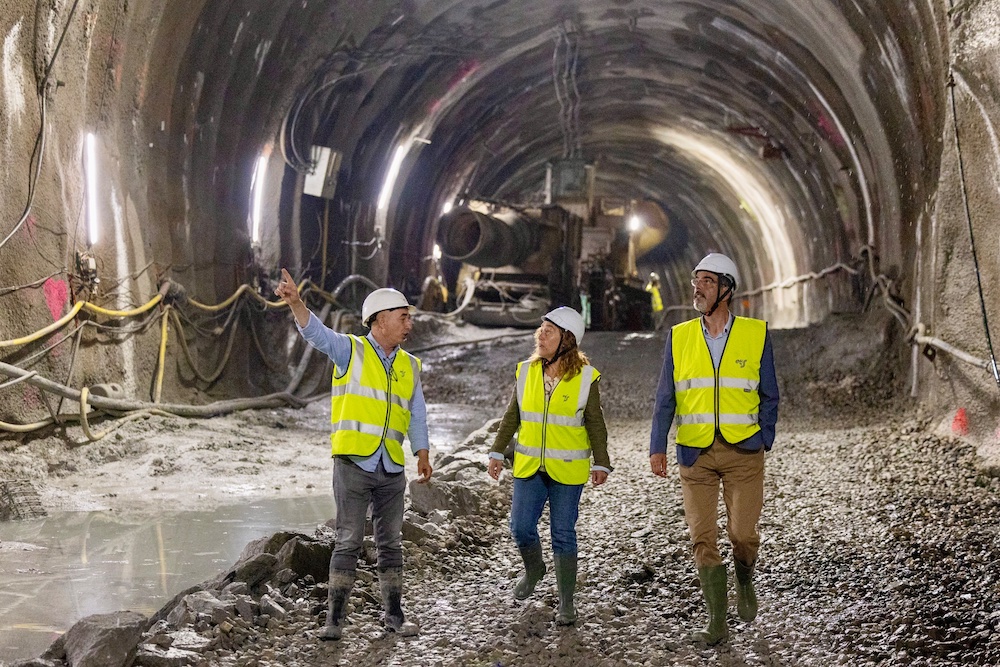Little has been said about the Fine Arts Building in the last two years, 72. Until the arrival of the San Sebastian Film Festival. During the inaugural gala, the presenters regretted the loss of the old cinematographer that housed the city. As he lived very closely on the subject of Fine Arts, what do you have to say?
The gala was held on 20 September, and I found out the day after the mention when I entered social media. The truth is that what was said by Andreu Buenafuente and Berto Romero was significant. On September 22, I worked with my students on the theme of the Palace of Fine Arts. I made an introduction to the heritage and explained what had happened to the building. It also served me to talk about the disappearance of the architectural heritage of San Sebastian.
At the moment, the construction phase continues to turn the building into a luxury hotel. Is there anything left of the artistic and architectural heritage of the Palace of Fine Arts?
Very little. Most of it has been destroyed and destroyed. That is why I think it is important to review the history of the building in recent years. After decades of neglect, starting in 2010, the process of dismantling the Fine Arts Theatre began. It was an old aspiration of the SADE company, owner of the building. However, in 2014, the Basque Government declared the palace as a cultural asset and prohibited the company from demolishing it. It wasn't enough to protect the building. In 2015, SADE asked the City Hall of Donostia-San Sebastian to remove the dome, claiming that it was in a poor state and that it could fall. The City Hall was willing, but apparently with the condition of remaking the dome. He was kicked out a few months later, and despite the fact that reconstruction works were agreed in 2016, none of that happened. As if that were not enough, in 2017, the High Court of Justice of the Basque Country (TSJPV) approved the appeal of SADE and withdrew the protection of cultural property. Finally, in 2021, they began to demolish the interior of the building to make it a luxury hotel, and they only maintain its facades. It has become another model of the facade of this city.
What is ‘vanguardism’?
It's a very present architectural fashion in Donostia. As its name suggests, it is thus called the total destruction of a building by its interior and the exclusive preservation of the facades. Tabakalera and the Pescadería de la Bretxa building are other examples. The same happened with the resort of San Bartolomé, as the facade was disassembled and placed as an ornament in the Plaza de la Roca de Amara. It is hypocrisy to keep only the exterior when the interior is completely disfigured. In this way, the architectural and artistic values of buildings completely disappear.
When you were in the Ancora Association, you were able to experience the process of the disappearance of the Fine Arts. What was that experience like?
Hard. I entered the Ancora Association in 2016 and followed closely the demolition of many buildings in the city. It was the most significant case of the Fine Arts Building, but there were also other demolitions with architectural and artistic heritage. I also had the opportunity to see the case Miraculously 19. Living an experience like this when we just got the grade of Art History was hard. In 2024, I can say that I have already hardened my skin and that I see the destruction of heritage with a point of cynicism. In fact, it is a systematic destruction of the heritage of San Sebastian, and many of them have occurred in democratic times since 1975. In the neighbouring country, France, it would be unthinkable for something like this to happen. They care for artistic, architectural and cultural heritage differently than they do here.
The City Hall has insisted that the Fine Arts building is privately owned and that the only maintenance option was to purchase Sade. However, this possibility was discarded from the very beginning. Was there no alternative?
Yes, of course. The City Hall has had several purchase options for the building, as well as money for it. The Ancora association also put several options on the table. For example, a swap or swap between buildings. Unfortunately, this has not happened and the city has lost a historic monument.
Palacio de Bellas Artes de San Sebastian will be the name of the hotel that is being built in this building. The promoters SADE and Hilton have ensured that they will be the faithful substitute for Fine Arts from the previous season. Can you recompose and replace a theater like this one?
It's impossible. A palace and a historical theater can't replace it when you've completely destroyed and deformed it. It can remake, but it will never have an original nature, essence, function and use. It was a movie theater and a theater with a cinematic, of great historical value. It was a great cultural infrastructure for the city and for the neighborhood.
To understand what has happened, it is worth remembering the history of the SADE group and the great cultural contribution to the city. It has been and continues to be a company that has managed and promoted the most emblematic cinemas in Donostia/San Sebastián. In addition to the Theatre of Fine Arts, they also dealt with the Miramar, Prince, Trueba and Petit Casino rooms. It is sad that it is the company itself that has disintegrated the contribution of the Fine Arts building. I also find it significant that the company that has the monopoly of cinemas in this city has left one of the oldest cinematic companies in Europe destroyed.
When they cast out the original dome, they announced that they would do a replica. But that's not a replica, but a pastiche or an imitation. Look, in Donostia we have a good pastiche model: La Perla The original 1912 building was demolished in 1991 and in its reconstruction they tried to imitate the building. Compared to the original, it was completely simplified when it was rebuilt and cheaper materials were used. It lost its quality and artistic value.
In the centre, several buildings with artistic heritage have been demolished or transformed. For example, around the hill of San Bartolomé. They drove through the church. The spa wall was moved to Arroka Square. What do you think of these cases?
I followed closely the case of the church of St. Bartholomew, and it was another barbarity of a long list. The involuntary or involuntary demolition of the church is another sad case of the loss of the architectural heritage of the city. It should be made clear, however, that all heritage cannot be protected. The built heritage of the city is abundant and not everything can be preserved. Those of us who investigate the history of art don't ask for the city to be preserved like a century ago.
In my opinion, the key is to have a strong municipal heritage policy. In addition, it is important to know how to reuse the built heritage. We must act with respect, knowing the origin of the heritage and understanding the needs of society. For example, a church of a religious nature can be given another use. Several churches have become libraries or cultural centers of our country, as well as international centers. Can it be a hotel? Yes, of course, but respecting the minimums of that built heritage, and that does not happen in Donostia.
From the center we will extend our view to the whole city. Today, is the artistic heritage of San Sebastian abundant?
Fortunately yet. The most striking heritage of San Sebastian is natural. For example, the precious bay of La Concha: a unique beauty. Around this, a very important architectural heritage has been built since the 19th century. It's also very interesting from the urban point of view. It is a model city that was restructured in the 19th century after the demolition of the walls. In particular, they began to restructure after 1863, and I believe that the authorities and architects of that time did an exceptional job. Unfortunately, my feeling is that this urban tradition is not understood today. This is directly related to the problems of the current city.
Has the city, therefore, since then evolved negatively from a heritage point of view?
No doubt. A sign of this is the transformation of San Sebastian over the last 100 years. A century ago, there were all the hotels on the front line of La Concha. I guess there was none in the Old Party. Thus, when the new city was structured, each neighborhood had its role. Summarized and simplified, the rich, the hotels and almost all the tourism was concentrated in the area of La Concha. The bourgeoisie lived in the centre and workers and fishermen worked in the Old Party.
In Francoist times, however, San Sebastian began to lose those roles. Starting in 2015, with the outbreak of tourism development, the characteristic character of each neighborhood was diluted. Hotels have been built everywhere and tourist homes can be found in most neighborhoods.
I would say that the present do not share the same view as the authorities of 150 years ago. They built a city that was orderly and coherent, after demolishing the walls. In the last ten years there has been some chaos from the urban point of view. As has happened in some Spanish cities, the proliferation of tourist houses has accentuated this confusion. So in 50 years' time, what kind of San Sebastian will we have? If there is no rigorous planning on the part of the authorities and public authorities, as citizens, I have every reason to worry.
At the same time, I am very concerned about what happened to the Old Party, where I do much of my life. The level of tourist accommodation that has been approved in this neighborhood is impressive. The streets structured since 1815 by the architect Pedro Manuel Urgartemendia cannot cope with this excess of tourists. It is unsustainable for the neighbors and for the quality of life of the neighborhood. Anyway, I've realized that many Donostians who don't live there don't care what's going on. In other words, they have no empathy and many Donostiarras think that the Old Party has to be a neighborhood for tourists and to exploit it.
As mentioned by Parte Vieja, is the city district with the most architectural and artistic heritage?
Yes, and that is why the Basque Government declared it to be very cultural in 2019. The two oldest churches in the city, the magnificent museums, the magnificent pier, the Plaza Nueva… in short, the neighborhood designed by Ugartemendia is maintained almost entirely.
From the patrimonial point of view, what building of the city would stand out?
Who's standing? [laughing]
That's it.
The church of St. Vincent is the one that I like most aesthetically and personally. I would also highlight the cloister and church of the San Telmo Museum.
We jumped on the personal level. You are a Doctor of Art History. Why?
As happened to the protagonist of the novel Alice in Wonderland, I fell into the rabbit hole, and I like to say that since then I have not ceased to fall by that hole. In the summer of 2014, I participated in an excavation of the Aranzadi Society of Sciences. We were in the Navarre town of Gallipienzo, and in the church of Salbatore, which was renovating the Government of Navarra, I took notice of some 14th-century paintings. I decided to study them for the degree of Art History that I was studying. Then it became an end-of-grade job and I published it in a book. As if it wasn't enough, it became a master's job and I started researching other churches. So, I kept falling into the hole of that rabbit. And yes, today I continue to analyze the legacy of medieval paintings from the small towns of Navarra and Álava.
Have you always been interested in art and culture?
In part, yes. My father has been a filmmaker [José María Tuduri] and my mother professor at the university [Elisabete Zubilwaukee]. The value of the culture I've created at home has been important to me. At Bachillerato I got good grades in Art History and, first of all, I did the top degree in Photography in Vitoria. Later, I took the Art History degree at the UPV/EHU. The director of Ancorá was Montserrat Fornells, professor of Art History at the Usandizaga Institute. It was he who awakened my interest in the History of Art.
The History of Art has also taken you to the United States, right?
At the end of the UPV/EHU I went to Boise (USA) for a year. I worked at the Basque Museum and Cultural Center. Then I did a master's degree in museology and heritage in Madrid. I also held a second master's degree in historical research at the UPV. And finally, I did the doctoral thesis of Art History between Reno (USA) and Euskal Herria. In total, I spent about four years in the United States, back and forth, and for me it was very important.
The thesis was written in English and has a significant title: ‘Painting Heaven and Hell in the Wake of the Plague’.
While conducting the research, I met the church of Eristain in Navarra. Its walls are unique, as the southern part is populated with demons and the northern part of saints and angels. That heaven and hell refers to this and other churches. On the contrary, the second part of the title, in the wake of the plague, refers to the black death suffered by Navarre in recent years. In fact, the paintings I studied are paintings at the time of this black death. I would say that this is the blackest time in the history of Navarre.
Back to Euskal Herria, you've worked on all kinds of jobs. For example, you have been an exhibition commissioner, right?
Yes, in a statement by the Government of Navarra: Carlism from the point of view of cinema. It's the influence that comes to me from my father, who directed two films: Chronicle of the Carlist War 1872-1876 and Santa Cruz, the guerrilla priest. The proposal to curate the exhibition was made in 2017 by the Museo del Carlismo de Estella, and I did it with the help of my father.
Currently, it is focused on research and teaching. However, it has also been a tourist guide in San Sebastian. What sightseeing did you offer?
They're actually very varied. From Gros to Pasai Donibane, I taught the tourist groups the way from Ulía. I also gave classic visits to the Concha, about the history of San Sebastian. I also visited the Old Party with walking tours, and I hated them with the so-called pintxos tours [laughs].
The theme of guided tours has given much to talk about this year. On the one hand, because the City Council has taken security measures to reduce the number of tourist groups. On the other hand, the work of some tourist guides has not been very honest in terms of the history of the city and the Basque country. What is the right model to show you the city?
Work with small groups of tourists of ten or fifteen people on walking visits. Above all, in the Old Party. The neighborhood can't support large groups. On biking visits, groups should be up to six people. I am in favour of sustainable tourist visits.
My main concern as a tourist guide was not to disturb the rest of the population and the neighbors. Unfortunately, a model of free tours or free tours has been imposed and the work of tour guides is not valued. Visitors can give the driver the amount of money they want and groups of tourists are too big. In addition, the guide often becomes an actress, because she has to do a show, and I don't like that at all.
Referring to tourism, and being a young resident in San Sebastian, do you think the tourist destination of the city has reached the highest level?
In some neighborhoods, yes, clearly. In any case, when we talk about turistification, I think instead of talking about the whole city, we have to talk about the neighborhoods. Aiete has not reached the highest level, but it has been overwhelmed in the Old Party. The location and gentrification of the downtown and Gros neighborhoods should also be taken into account.
Some experts recommend the decline of tourism. Do you agree?
I totally agree. The platform and citizen associations are very important. Moreover, these movements have been part of the Donostian opposition in recent years, and I would say that it has been noted in the last municipal elections. In addition, tourism has become the real concern of many Donostiarras, something that has not been noticeable for five or six years. After all, uncontrolled tourism and overcrowding have given rise to a sense of concern among the public.
The artistic and architectural heritage is related to tourism. In Donostia-San Sebastián, is the relationship between the two healthy?
It should be. Valuing heritage means understanding the nature of the city. Urban and architectural nature. If citizens understand the historical heritage of the city, we will achieve a much more sustainable city. The objective should be the conservation and reuse of the built heritage. Exploitation should be sustainable. Unfortunately, my feeling is that in this city the powerful have adopted the worst models of Spain, giving many steps of the time. Instead, they have forgotten the sustainable and forward-looking models that exist in Europe.





